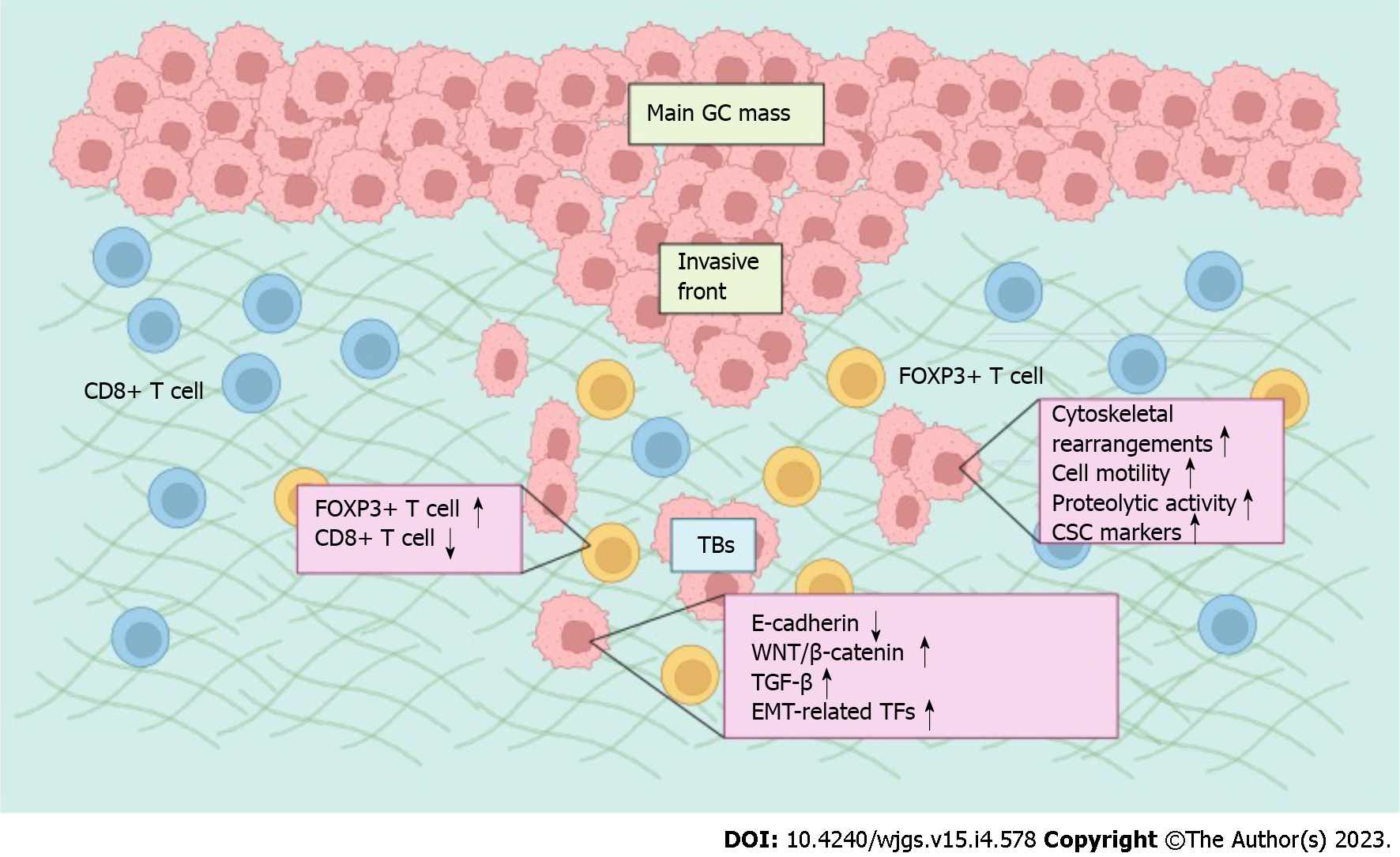Copyright
©The Author(s) 2023.
World J Gastrointest Surg. Apr 27, 2023; 15(4): 578-591
Published online Apr 27, 2023. doi: 10.4240/wjgs.v15.i4.578
Published online Apr 27, 2023. doi: 10.4240/wjgs.v15.i4.578
Figure 1 The mechanism of tumor budding in gastric cancer.
Various signaling pathways are activated in budding cells, leading to increased expression of epithelial-mesenchymal transition (EMT)-related transcription factors and the loss of cell-cell adhesion. Tumor budding (TB) also shares many invasive abilities endowed by EMT, such as cytoskeletal rearrangements, cell motility and increased proteolytic activity. Furthermore, TB cells often display attributes of cancer stem cells (CSCs). The density of tumor-infiltrating lymphocytes changed from CD8+ > FOXP3+ T cells in the nonbudding area to FOXP3+ > CD8+ T cells in the budding area. This figure was created with BioRender.com. GC: Gastric cancer; TB: Tumor budding; EMT: Epithelial-mesenchymal transition; CSC: Cancer stem cells.
- Citation: Xiao SM, Li J. Tumor budding in gastric cancer. World J Gastrointest Surg 2023; 15(4): 578-591
- URL: https://www.wjgnet.com/1948-9366/full/v15/i4/578.htm
- DOI: https://dx.doi.org/10.4240/wjgs.v15.i4.578









